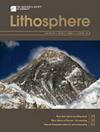Enhancement of the Consistency and Connectivity of the Ant-tracking Algorithm via 3D U-Net with Dual-Threshold Iteration
IF 1.8
4区 地球科学
Q3 GEOCHEMISTRY & GEOPHYSICS
引用次数: 0
Abstract
The ant-tracking algorithm is commonly used to extract faults in geological structures. However, obtaining 3D ant-tracking data requires the calculation of various volume attributes. To obtain satisfactory data, it is necessary to iterate through the parameters of these attributes to achieve reasonable continuity. Moreover, due to the numerous parameters involved, the algorithm can produce different outputs with each execution. In this study, we aimed to enhance the performance of the ant-tracking algorithm by combining it with a basic U-Net structure. The input and corresponding labels to the model are "cubic shaped" 3D data segmented from the original 3D seismic volume to facilitate cross-validation with distinct regions. We used the label data as the single ant-tracking result to minimize the operator’s bias by executing the ant-tracking with several different parameters and executors and then taking the average. An evaluative comparison of three different loss functions (MAE, RMSE, and MSE) was conducted to identify the optimal function for training the model. Across five out of the six metrics, MSE function demonstrated predominant performance, leading to its adoption. Apart from this, a significant number of misinterpreted faults led us to propose the post-processing algorithm named "Dual-Threshold Iteration." It was initially used to extract fine blood vessels branching out from large vessels in medical image segmentation and adapted in our work to ensure a high level of continuity while ignoring worthless noise. Comparison with the F1 score and the number of 3D-connected components confirmed that the proposed method could generate reduced bias and smoothly connected fault structures.通过双阈值迭代的 3D U-Net 增强蚂蚁追踪算法的一致性和连接性
蚂蚁跟踪算法通常用于提取地质结构中的断层。然而,获取三维蚂蚁跟踪数据需要计算各种体积属性。为了获得令人满意的数据,有必要重复计算这些属性的参数,以达到合理的连续性。此外,由于涉及的参数众多,算法每次执行都会产生不同的输出结果。在本研究中,我们旨在通过将蚂蚁追踪算法与基本的 U-Net 结构相结合来提高其性能。模型的输入和相应的标签是从原始三维地震剖面中分割出来的 "立方体 "三维数据,以方便与不同区域进行交叉验证。我们使用标签数据作为单一的蚂蚁追踪结果,通过使用多个不同参数和执行器执行蚂蚁追踪,然后取平均值,最大限度地减少操作员的偏差。我们对三种不同的损失函数(MAE、RMSE 和 MSE)进行了评估比较,以确定训练模型的最佳函数。在六项指标中的五项指标中,MSE 函数的性能占优,因此被采用。除此之外,大量的误读故障也促使我们提出了名为 "双阈值迭代 "的后处理算法。该算法最初用于在医学图像分割中提取从大血管分支出来的细小血管,在我们的工作中进行了调整,以确保高水平的连续性,同时忽略无价值的噪声。与 F1 分数和三维连接组件数量的比较证实,所提出的方法可以生成偏差较小且连接平滑的断层结构。
本文章由计算机程序翻译,如有差异,请以英文原文为准。
求助全文
约1分钟内获得全文
求助全文
来源期刊

Lithosphere
GEOCHEMISTRY & GEOPHYSICS-GEOLOGY
CiteScore
3.80
自引率
16.70%
发文量
284
审稿时长
>12 weeks
期刊介绍:
The open access journal will have an expanded scope covering research in all areas of earth, planetary, and environmental sciences, providing a unique publishing choice for authors in the geoscience community.
 求助内容:
求助内容: 应助结果提醒方式:
应助结果提醒方式:


